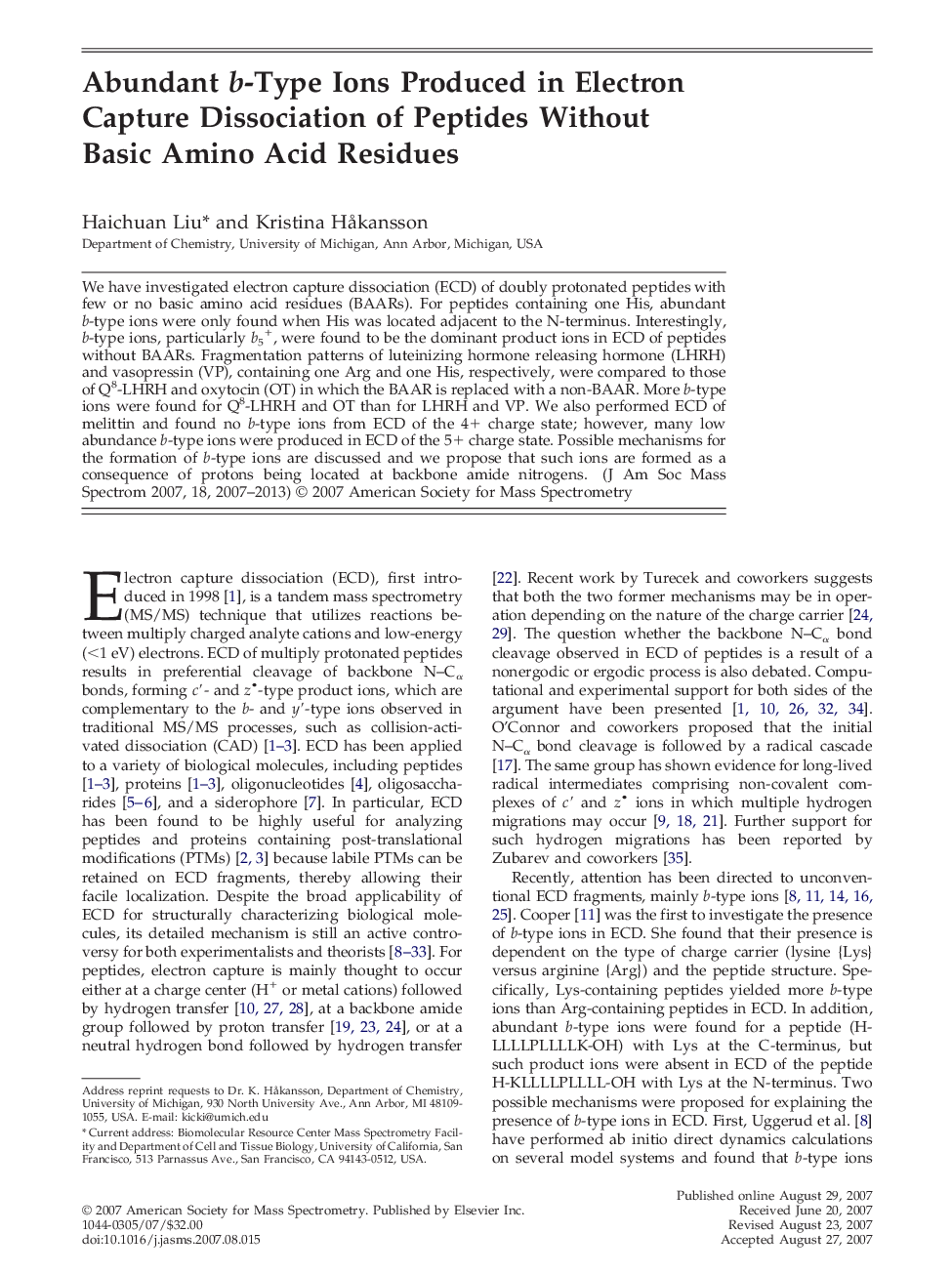| کد مقاله | کد نشریه | سال انتشار | مقاله انگلیسی | نسخه تمام متن |
|---|---|---|---|---|
| 1196133 | 964455 | 2013 | 7 صفحه PDF | دانلود رایگان |

We have investigated electron capture dissociation (ECD) of doubly protonated peptides with few or no basic amino acid residues (BAARs). For peptides containing one His, abundant b-type ions were only found when His was located adjacent to the N-terminus. Interestingly, b-type ions, particularly b5+, were found to be the dominant product ions in ECD of peptides without BAARs. Fragmentation patterns of luteinizing hormone releasing hormone (LHRH) and vasopressin (VP), containing one Arg and one His, respectively, were compared to those of Q8-LHRH and oxytocin (OT) in which the BAAR is replaced with a non-BAAR. More b-type ions were found for Q8-LHRH and OT than for LHRH and VP. We also performed ECD of melittin and found no b-type ions from ECD of the 4+ charge state; however, many low abundance b-type ions were produced in ECD of the 5+ charge state. Possible mechanisms for the formation of b-type ions are discussed and we propose that such ions are formed as a consequence of protons being located at backbone amide nitrogens.
Journal: Journal of the American Society for Mass Spectrometry - Volume 18, Issue 11, November 2007, Pages 2007–2013